Hello!
Dear Friend,
Summer may be winding down, but we’ve got a celebration coming! September 7 is California Biodiversity Day, a great reminder of the incredible variety of life in our midst, and the importance of protecting it. We hope you’ll hop on to iNaturalist where a statewide effort to observe nature is happening all next week, or visit us at the Tam Van at Lake Lagunitas. Or join Friends of Mt. Tam for one of their docent-led hikes, which are happily returning to Mt. Tamalpais State Park this month.
At One Tam we have lots to celebrate. This summer we launched Marin Milkweed Monitors, a volunteer-based effort to document native milkweed in support of the monarch butterfly. We re-launched the Tamalpais Bee Lab, which is working to document pollinators in our region. Our bat monitoring program is now in its fourth year. We’ve reached a milestone in our invasive plant survey work. And we’ll have more to share this fall about opportunities to get involved with the Marin Wildlife Picture Index Project.
All of this work to protect our region’s biodiversity, and to create new pathways for our communities to connect with it, is possible because of our members and supporters. Thank you! If you’re not a member yet, consider celebrating with us by joining today.
Cailey Gibson
Associate Director, Individual Giving, One Tam
| |
Celebrating LINC

LINC Tam 2021 participants at Ring Mountain. Photo: Adriana Castillo / One Tam
Congratulations to our LINC participants on completing an amazing summer of service and learning! LINC (Linking Individuals to their Natural Community) brings high school youth from across the Bay Area together to spend the summer connecting to public lands and to communities through service projects, deepening understanding of ecology and climate change, and building career and leadership skills. Highlights of this summer’s program included:
- Helped build trails and maintain parkland with Marin County Parks
- Gained science skills and learned about pollinators with the Tamalpais Bee Lab
- Practiced resume writing and speaking to the public about their work
- Learned about sea level rise while kayaking in Bothin Marsh and helped clean up litter along the shoreline
- Visited Muir Woods National Monument and learned about climate change impacts to Redwood forests
- Gained resources on how to teach about climate change in our communities
- Enjoyed a well-deserved overnight camping trip at Rob Hill campground
It sounds like an impactful program, but don’t take our word for it – as one participant said, “LINC has impacted me in many ways. It has increased my understanding of nature, improved my leadership and social skills. I truly feel like it made a better person.” Another student shared that “LINC has made me a more mindful human, more aware of social justice in climate change, passionate about life and nature, and has made me a loving and excited leader."
Deep thanks to our youth and their families for being a part of LINC this year, and to all of our partners and supporters who made this program possible.Visit our Instagram to see LINC in action >>
|
Rising Environmental Youth Leaders Now Accepting Applications
|
|
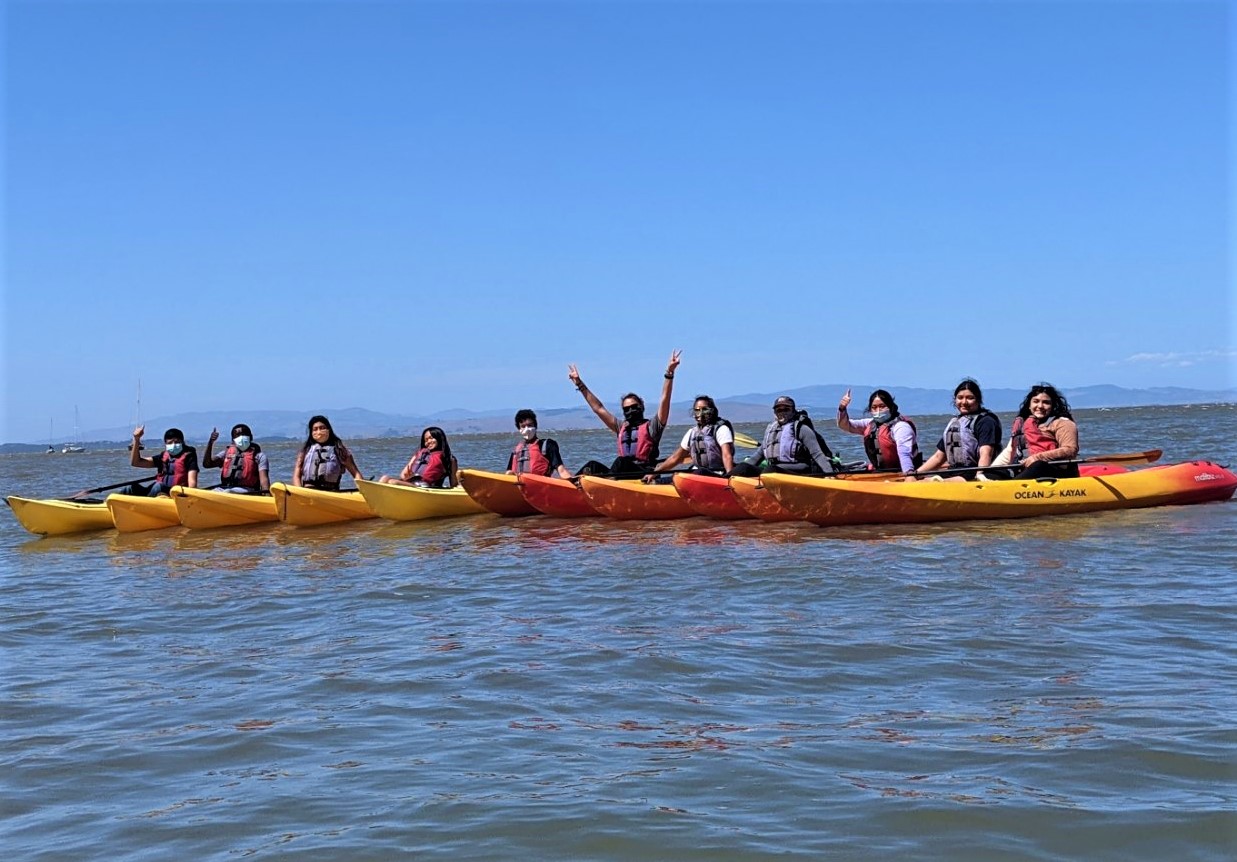
|
|
REYL participants kayaking during the previous year's program. Photo: Sara Leon Guerrero / One Tam
|
|
One Tam's Rising Environmental Youth Leaders (REYL) program for high school students is now accepting applications! REYL is a paid high school environmental leadership program that connects young people from underserved communities to their local parks and open space. The program will run October 2021 to May 2022. Young adults learn the skills necessary to become strong environmental advocates and community leaders through service learning, environmental education, and outdoor trips.
Applications are due September 13. Learn more and apply >>
|
| |
Early Detection Rapid Response for Weeds Is Working
|
|

|
|
One Tam team members Rachel Kesel, David Greenberger, and Michael Sturtevant, who lead One Tam's EDRR program, removing thoroughwort (Ageratina adenophora) near Bootjack Campground in Mt. Tamalpais State Park in 2019. Photo: Naftali Moed / State Parks
|
|
Why is surveying for weeds important for Mt. Tam? Well, it’s kind of like brushing your teeth – something you have to do regularly to avoid health problems later. Like any preventive health measure for people, monitoring for invasive plants is important for the health of Mt. Tam’s ecosystems. One Tam's Early Detection and Rapid Response (EDRR) program for monitoring invasive plants reached a milestone this summer, finishing a second cycle of surveys along the mountain’s road and trail network.
This second three-year EDRR survey cycle began in 2019 and was a true partnership effort that overcame delays caused by COVID-19 in 2020. From mid-March to mid-June 2021, the One Tam team surveyed over 150 miles of roads and trails! National Park Service and Marin County Parks staff covered extra miles on their lands so that Parks Conservancy staff could focus on the remaining partner lands.
During this second cycle of surveys, the teams found relatively few new populations of weeds that are a priority for removal, which is an early sign that the first EDRR cycle was effective. Due to the program’s efforts, along with ongoing agency efforts, today's highest priority invasive plants are being found and removed before they’re able to seriously affect the health of the mountain.
|
| |
ICYMI: Catch Up with Evolving Shorelines
|
|
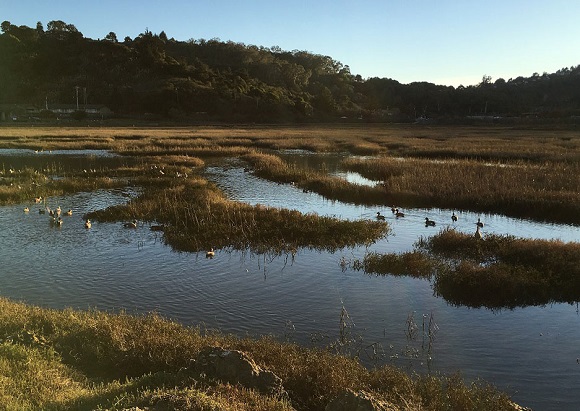
|
|
Bothin Marsh. Photo: One Tam
|
|
It’s been a busy year for One Tam’s work to adapt Bothin Marsh to sea level rise. The project team has completed an analysis of the Adaptation Concepts for enhancing the Bothin Marsh Open Space Preserve’s tidal marsh and elevating the Mill Valley-Sausalito Multi-Use Pathway, and with community input a favored approach has emerged.
You can learn about our favored approach, with the Mill Valley-Sausalito Multi-use Pathway ringing the marsh, by watching our June 8 presentation,"Evolving Shorelines Community Meeting: Concepts Evaluation Presentation." We shared how we evaluated the ecological and public access benefits, as well as other important considerations for each of the concepts. We also shared a summary of the Adaptation Concepts Survey and discussed how the community’s input informed our evaluation. You can view the detailed Adaptation Concept Report which documents the adaptation planning and design process that will serve as the foundation for future detailed design development.
In September, the project team will begin additional study and design of the re-aligned trail other marsh resilience measures. We’ll be in touch with future updates in this e-news, and you can sign up here to get special email updates on our work at Bothin Marsh and announcements for future events.
In the meantime, we invite you to explore more resources about our Evolving Shorelines work at Bothin Marsh:
|
| |
SeverE Drought: Save Water
|
|
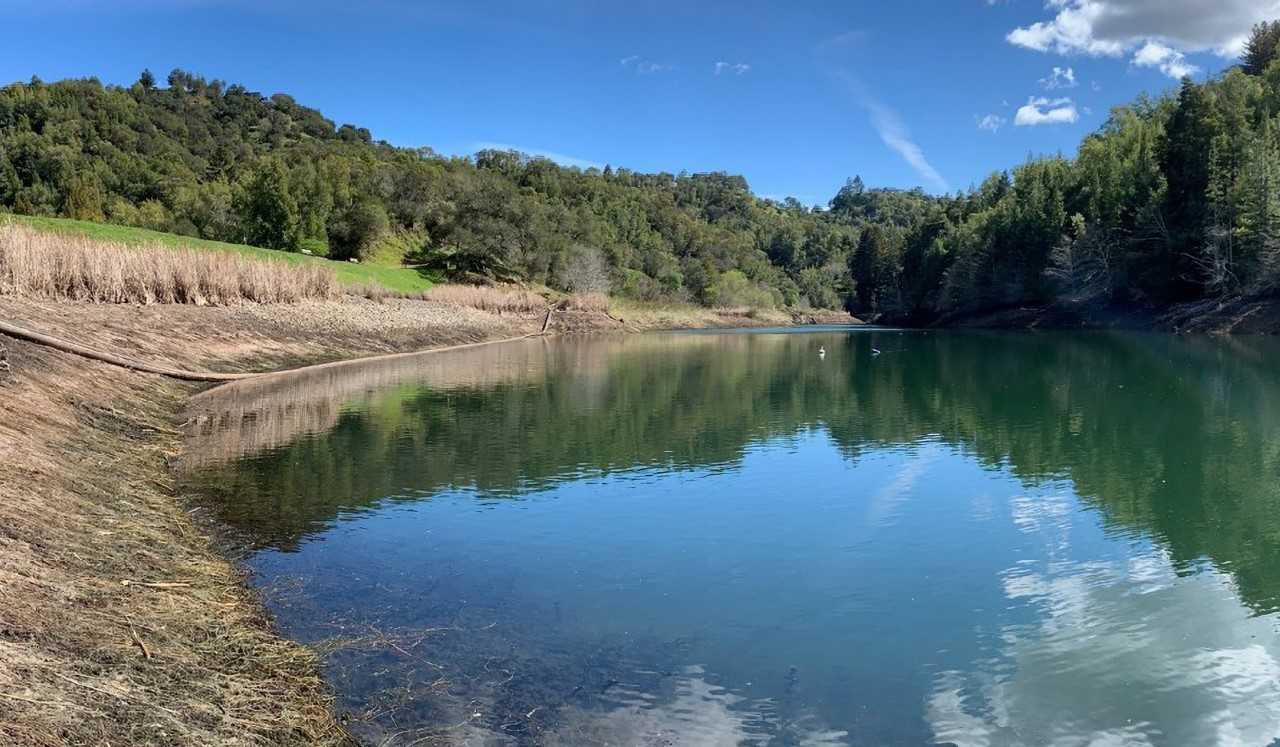
|
|
Phoenix Lake showing low water level. Photo: Marin Water
|
|
With reservoir levels at historic lows, Marin Water’s board of directors declared a water shortage emergency and adopted mandatory water use restrictions. The goal of the restrictions is to achieve a 40 percent reduction in water use districtwide. Marin Water is monitoring drought conditions carefully and additional restrictions will be added as needed. Please view current restrictions including a spray irrigation schedule by community and get tips and rebates to help you save.
|
| |
Monarchs, Milkweed & Mysteries
|
|

|
|
Monarch butterflies and milkweed. Photos: iNaturalist users erinacious and icosahedron.
|
|
This summer One Tam launched the Marin Milkweed Monitors program as part of our work to support the western monarch butterfly. It’s a community science initiative to understand the extent and condition of monarch breeding habitat in public lands managed by One Tam partners. Our knowledge of wild native milkweeds in this area is incomplete, so we recruited 20 community members to become ecological detectives and help us answer questions like: Is milkweed present in known historical sites? Are there sites we don’t know about? How are the milkweeds doing? Are monarch butterflies using them to raise their caterpillars?
Volunteers will complete their detective work by October, and we’ll be able to update you on what they found this fall.
You too can help support the monarch butterfly! Learn more about this continental conservation effort >>
And, as always, document when you see them on iNaturalist (remember, biodiversity day coming up next week is a great time to get started!)
|
| |
Thank you Turtle Observers & Frog Docents
|
|
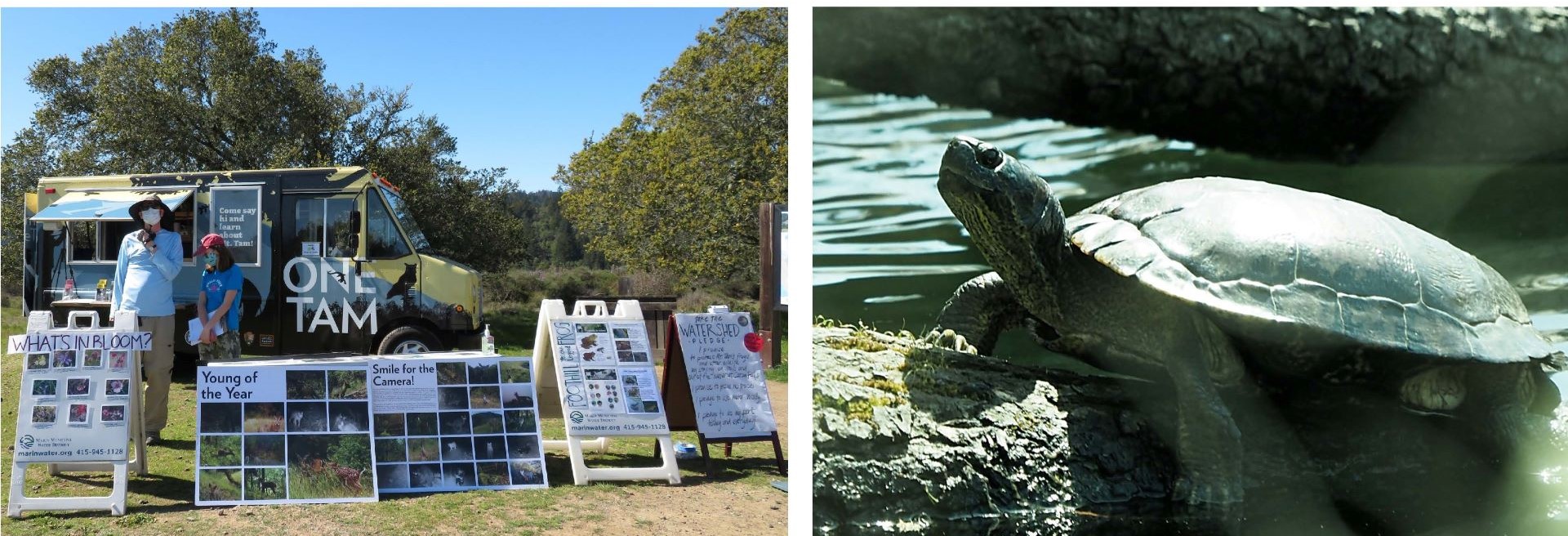
|
|
Volunteers participating with the Tam Van and a Western Pond Turtle . Photos: Turtle Observers
|
|
Despite the adversities posed by COVID-19 and a record-breaking drought, the Turtle Observer and Frog Docent programs led by Marin Water were a huge success this year. Transitioning our orientations online presented its challenges, but in turn allowed us to train an unprecedented number of community members about two species we work to protect on the mountain: western pond turtles and foothill yellow-legged frogs.
Turtle Observers volunteered the highest number of hours in 2021 since 2010, and nine of our 32 Observers were youth! Because of the drought, many Observers had to spend more time looking for turtles in unusual locations and on the shores of the lakes. But they found them! The 2021 high counts of western pond turtles (WPT) from all four lakes yielded a total of 30 native turtle sightings; 16% of turtles recorded. The stability of WPT populations over the thirteen-year monitoring period indicates that the species is not in a dramatic decline in response to the rise of non-native populations. However, continued growth in non-native populations will likely increase pressures on WPT populations. View the season summary here >>
Frog Docents combined efforts with the One Tam Ambassador program. Adding outreach shifts at the Tam Van allowed us to provide more educational materials about foothill yellow-legged frogs than ever before and speak with members of the community at the trailhead for the first time. Marin Water helps the frogs through measures like moving egg masses laid in roads, the removal of non-native predators from creeks, and the presence of informational signage and docents at sensitive habitat during the breeding season. Numbers of egg masses and frogs in Little Carson Creek indicate a generally stable population since monitoring efforts began. View the season summary here >>
Thank you for contributing your time and energy to supporting the health of the watershed. We look forward to seeing you all next spring!
In the meantime, check out another opportunity to make a difference in the watershed, focused on removing litter. More information >>
|
| |
Tamalpais Bee Lab Is Still Buzzing! Fall Dates Coming Soon
|
|
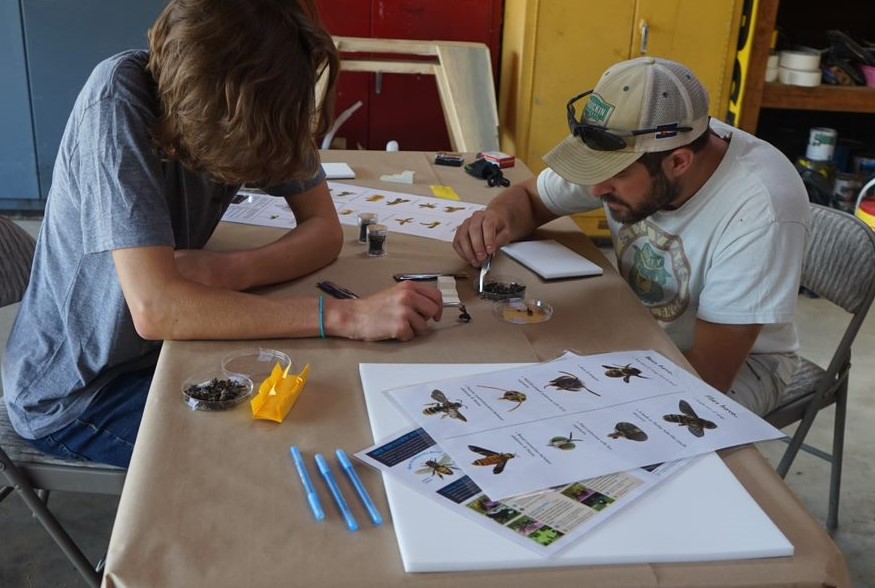
|
|
Volunteers participating in a Tamalpais Bee Lab event this summer. Photo: Lisette Arellano / One Tam
|
|
The Tamalpais Bee Lab has enjoyed lots of enthusiasm for the return of in-person events with COVID-19 precautions. Thank you to all who came out this summer, and to those who expressed interest, to contribute to this effort to learn more about Mt. Tam’s wild bees and other pollinators. Field collection will continue until the end of October. We will announce more Tamalpais Bee Lab dates shortly with new morning and afternoon sessions on many Saturdays this fall - check onetam.org/calendar for updates.
|
| |
| |
Meet a Bee!
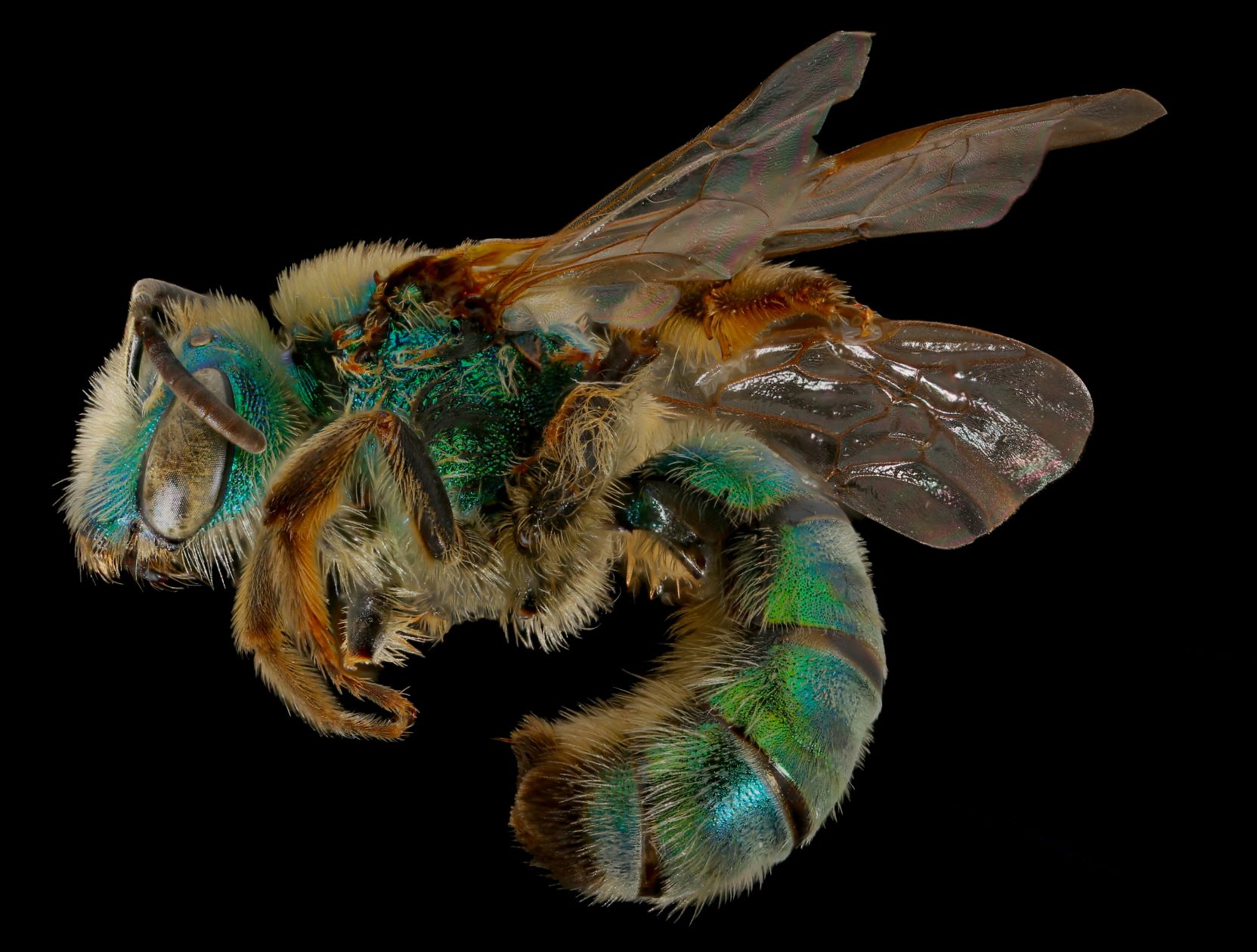 |
|
Agapostemon texanus, Texas striped sweat bee. Photo: Kris Fleming / One Tam
|
| |
Pleased to meet you! I’m Agapostemon texanus, also known as the green or Texas striped sweat bee.
You'll find me flying between April and November throughout California, much of the continental U.S., north into southern Canada, and south into central Costa Rica. I am a generalist forager and will visit many different types of flowers in wildland and urban landscapes. Females, like me, are easily recognizable with our striking metallic green bodies. But our male partners are often confused with wasps because of their green thoraxes and striped yellow and black abdomens.
Unlike honey and bumble bees, I do not live in a colony with a queen and workers. Instead, I am a solitary nester, creating my own nests directly in the ground. If you look carefully, you might find me flying low to the ground searching for a nice nesting spot!
This female Agapostemon texanus was collected during the initial 2017 Tamalpais Bee Lab survey. In addition to pinning and identifying, macrophotography is another important way of documenting the bee species that we are observing on Mt. Tam. These up-close images reveal more about the incredible complexity, diversity, and beauty of the region’s bees than may usually meet the eye. It will also allow us to share more about these incredible creatures more broadly. Big thanks to Kris Fleming, who interned with One Tam over the summer and completed a stunning series of these photos as part of his internship.
Learn why we're conducting this study and meet more amazing bees in future newsletters!
|
|
| |
About Us
|
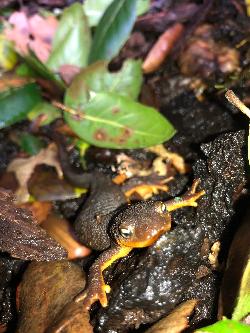 |
|
A California newt at Lake Lagunitas on Mt. Tam
|
|
One Tam works to ensure a healthy, vibrant and diverse landscape for our beloved and iconic Mt. Tam. We are the community-supported partnership of Mt. Tam’s land agencies and managers.
One Team leads programs that care for our mountain, inspire our next generation of land stewards and strengthen our local community. We invite you to join us.
|
|
| |
|
|